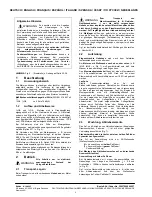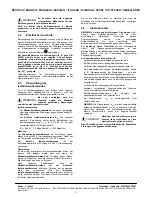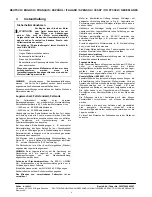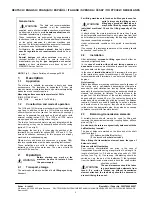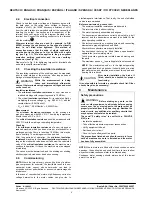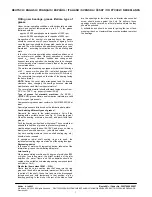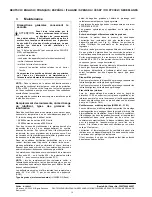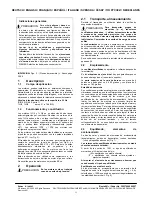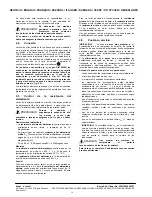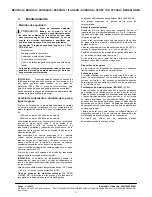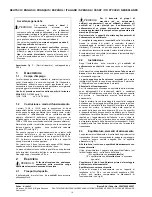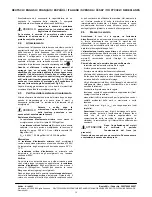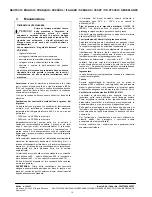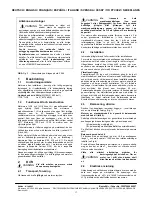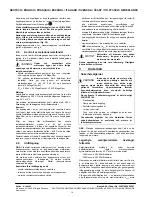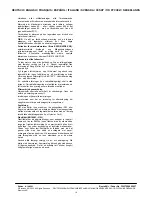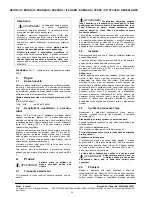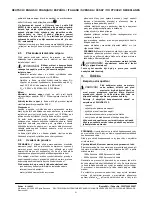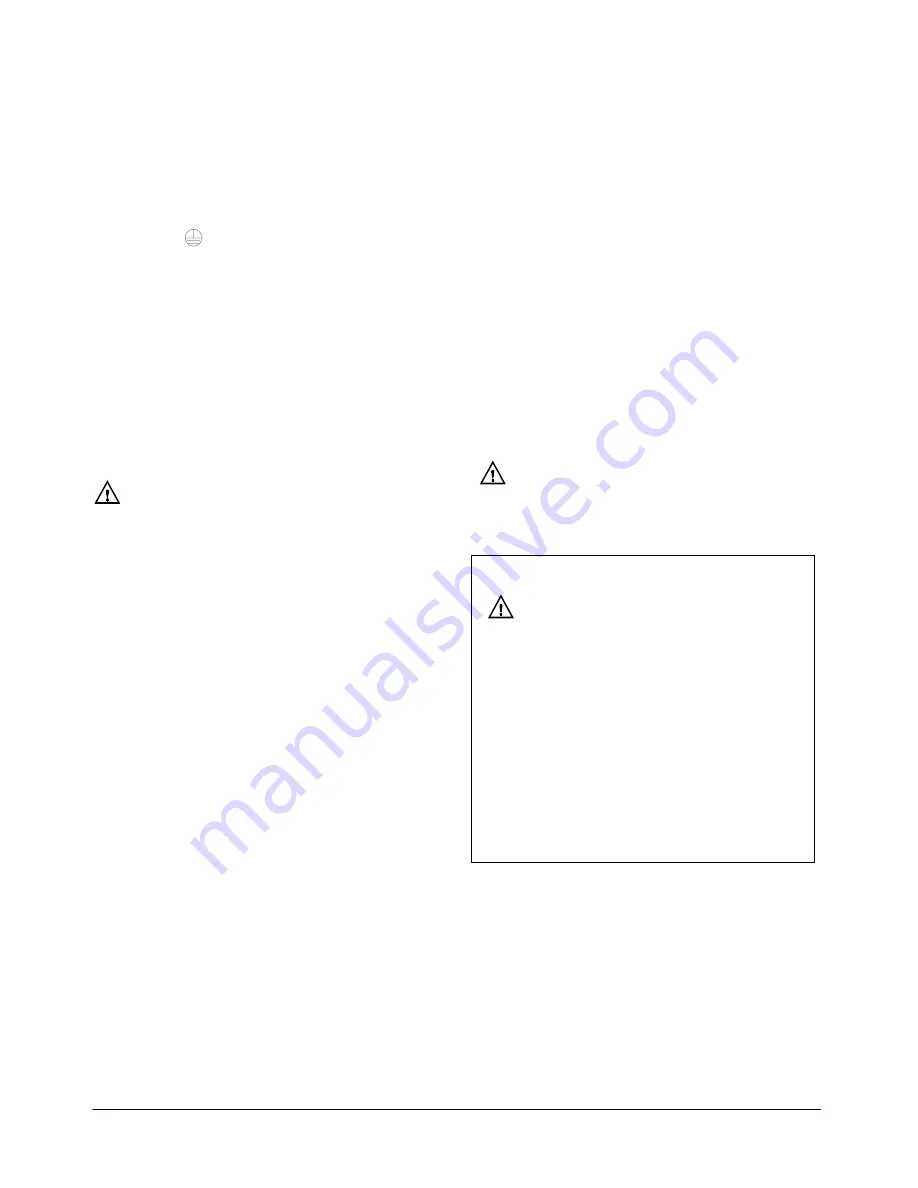
DEUTSCH / ENGLISH / FRANÇAIS / ESPA
Ň
OL / ITALIANO / SVENSKA /
Č
ESKY /
ПО
РУССКИ
/ NEDERLANDS
2.4 Electrical
connection
Check to see that system voltage and frequency agree with
the data given on the rating plate. Voltage or frequency
deviations of ±5% (
for 1ME6, frequency deviations of ±3%)
from the rated values are permitted without the necessity of
derating the output. Connection and arrangement of the
terminal links must agree with the diagram provided in the
terminal box. Connect the earthing conductor to the terminal
with the marking
.
Wherever terminal clips are used (for example, to DIN
46282), arrange the conductors so the clips are virtually
level, i.e. not tilted when tightened. This method of
connection means that the ends of single conductors
must be bent in the shape of a U or be fitted with a cable
lug (see Fig. 3.1). This also applies to the green-yellow
protective earthing conductor and the outer earthing
conductor (see Fig. 3.2).
Please refer to Fig. 4 for tightening torques for terminal bolts
and nuts (except for terminal strips).
2.5
Checking the insulation resistance
The insulation resistance of the windings must be measured
prior to initial startup of the machine, after long periods of
storage or standstill (approx. 6 months).
While the measurement is being
taken and immediately afterwards,
some of the terminals carry dangerous voltages and must
not be touched.
Insulation resistance
- The
minimum insulation resistance
of new, cleaned or
repaired windings with respect to ground is 10 MOhm.
- The critical
insulation resistance
R
crit
is calculated first by
multiplying the rated voltage U
N
, e.g. 0.69 kV AC, with the
constant factor (0.5 MOhm/kV):
R
crit
= 0.69 kV * 0.5 MOhm/kV = 0.345 MOhm.
Measurement
The
minimum insulation resistance
of the windings to
ground is measured with 500 V DC. The winding temperature
should then be 25
o
C ± 15
o
C.
The
critical insulation resistance
should be measured with
500 V DC with the winding at operating temperature.
Checking
If the
minimum insulation resistance
of a new, cleaned or
repaired machine, which has been stored or at standstill for a
prolonged period of time, is less than 10 MOhm, this may be
due to humidity. The windings must then be dried.
After long periods of operation, the
minimum insulation
resistance
may drop to the
critical insulation resistance
. As
long as the measured value does not fall below the calculated
value of the
critical insulation resistance
, the machine may
continue in operation. If it does, the machine must be stopped
immediately.
The cause must be determined, and the windings or winding
sections repaired, cleaned or dried as necessary.
2.6 Commissioning
NOTE:
Where the torque is very uneven (the drive of a piston-
type compressor, for example), the inevitable result is a non-
sinusoidal motor current, whose harmonics can lead to
excessive system perturbation or excessive electromagnetic
interference.
In the case of converter-fed motors, high-frequency current or
voltage harmonics in the motor cables can give rise to
electromagnetic interference. That is why the use of shielded
cables is recommended.
Before commissioning, check that:
- The minimum insulation resistances are adhered to
- The rotor turns freely without rubbing
- The motor is properly assembled and aligned
- The transmission elements are correctly adjusted (e.g. belt
tension) and the transmission element is suitable for the
given operating conditions
- All electrical connections, mounting screws and connecting
elements are properly tightened and fitted
- All protective conductors are properly installed
- Any auxiliaries that may be fitted (brakes, speedometer,
separate fan) are in working order
- Touch protection guards are installed around moving and
live parts
- The maximum speed n
max
(see rating plate) is not exceeded.
NOTE:
The maximum speed n
max
is the highest operating
speed permitted for short periods. It should be kept in mind
that motor noise and vibration are worse at this speed, and
bearing life is reduced.
After motor installation, the brake, if
fitted, should be checked for proper
functioning.
CAUTION
WARNING
It is not possible to formulate a complete check list. Other
checks may also be necessary!
3 Maintenance
Safety precautions
WARNING
Before starting any work on the
motor or other equipment, particularly before opening
covers over live or moving parts, the motor must be
properly isolated from the power supply. Besides the
main circuits, any additional or auxiliary circuits that
may be present must also be isolated.
The usual “5 safety rules” (as set forth in DIN VDE
0105) are:
- Isolate the equipment
- Take effective measures to prevent reconnection
- Verify equipment is dead
- Earth and short-circuit
- Cover or fence off adjacent live parts
The precautions listed above should remain in force
until all maintenance work is finished and the motor
has been fully assembled.
NOTE:
Where motors are fitted with closed condense water
openings, these should be opened from time to time to allow
any accumulated condense water to be drained away.
Condense water openings should always be at the lowest
point of the motor!
Edition N14-0903
Bestell-Nr. / Order No. 35037000000057
© Siemens AG 2000 All Rights Reserved
DEUTSCH/ENGLISH/FRANCAIS/ESPANNOL/ITALIANO/SVENSKA/
Č
ESKY/
ПО
РУССКИ
/NEDERLANDS
Siemens AG
6


